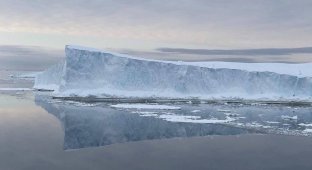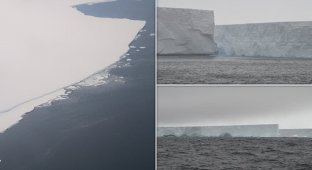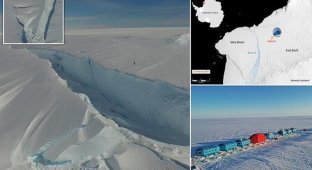How a huge iceberg is destroyed, moving away from Antarctica (7 photos + 1 video)
New photos and videos have emerged that show the world's largest iceberg, A23a, steadily collapsing as it moves away from Antarctica. Ocean waters gradually erode it, and cracks, caves and arches appear along the edges of the thick ice floe. 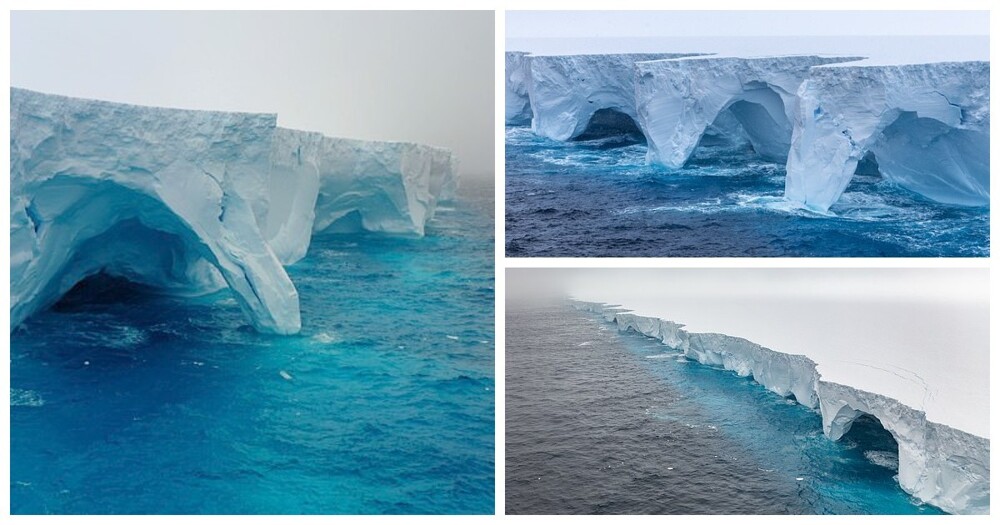
A giant iceberg with an area of 4,170 square meters. km and weighing a trillion tons, breaking off from Antarctica and drifting north, is being eroded - similar to the erosion of coastlines on land. Ocean waters form caves and arches in it. The waves hit the iceberg, forming gaps that steadily increase and will eventually lead to the collapse of its top.
Large objects such as A23a need to be constantly monitored as they can pose a threat to ships and wildlife.
The EYOS Expeditions team, which arrived on A23a on Sunday, used a drone to take aerial photographs.
"We saw waves a good three or four meters high crashing onto the iceberg," expedition leader Ian Strachan told the BBC. “They created cascades of ice—a constant state of erosion.”

EYOS videographer Richard Sidey said A23a is "mind-blowingly large" and "extends as far as you can see in both directions." According to Saidy, the iceberg is too big to photograph.

Iceberg erosion is occurring in the same way as land erosion, although not as slowly, new photographs show. Powerful waves repeatedly hit the base of the iceberg, creating small cracks and cracks that become larger and larger over time.

Eventually these openings widen, becoming caves and then large arches until the "roof" (the top layer of ice) collapses due to lack of support underneath. This leaves small "columns" that then form smaller "stumps" before melting completely.

Thanks to melting, A23a will eventually disappear completely, but due to its enormous size, this may take a long time.
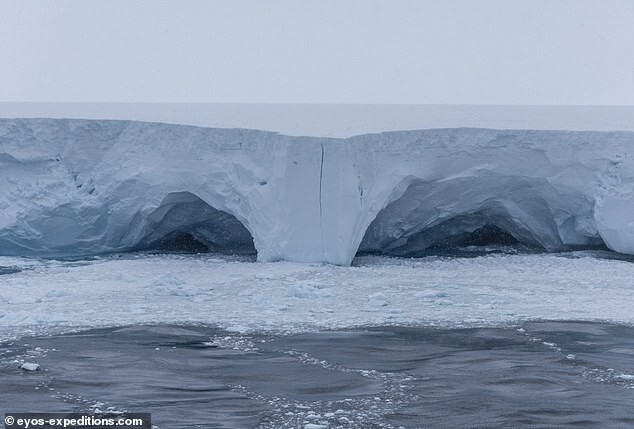
According to the British Antarctic Survey (BAS), which visited A23a in December, the iceberg is moving north at a speed of about 48 km per day. It will probably now end up in “iceberg alley,” the usual route that icebergs take to the sub-Antarctic island of South Georgia.

There is a possibility that an iceberg will disrupt the feeding patterns of wild animals such as penguins, for example, if it parks in an area where feeding usually takes place (approaches one of the sub-Antarctic islands).












